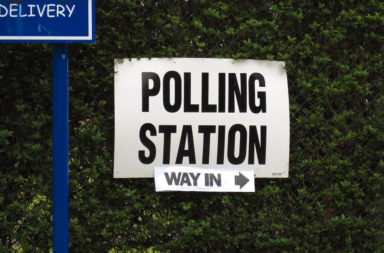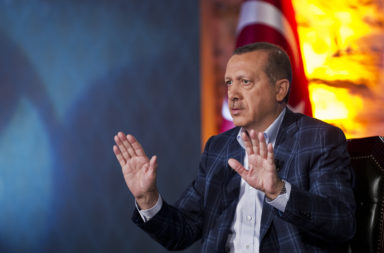Donald Trump entered office in January vowing to improve US relations with Russia. Less than three months into his presidency, however, the prospects for a rapprochement with Russian President Vladimir Putin seem to be as remote as they were under any of his predecessors.
- This is the first official visit from the US.
- On Syria Tillerson has called Russia “incompetent” and accused them of being “outmanoeuvred”.
- Will the US be able to co-operate with Russia?
The extent of tensions and disagreements between the United States and Russia will be on display on Wednesday when US Secretary of State Rex Tillerson meets in Moscow with his Russian counterpart, Foreign Minister Sergey Lavrov, in a much anticipated encounter.
Where’s the love now?
Tillerson’s April 12 visit to Russia is the first by a top Trump administration official. A former oilman who made many trips to Russia while CEO of ExxonMobil, Tillerson is still learning the ropes as America’s top diplomat.
Just a few weeks ago, Tillerson’s trip was seen as a test of Trump’s commitment to developing a better relationship with Moscow. But after a week of diplomatic fallout following US military strikes against the regime of Bashar al-Assad, the summit’s main goal now is to avoid a dangerous escalation of the situation in Syria and in US-Russia bilateral relations.
The US bombing came in retaliation for a suspected chemical attack on rebel-held territory in Idlib Province on April 4 that killed at least 80 civilians, including women and children, and sickened hundreds more. The United States and other Western governments claim the Assad regime was responsible. American warships in the eastern Mediterranean fired 59 cruise missiles against the military air base in western Syria believed to be where the attack originated.
Russia called the missile strikes an act of aggression and a violation of international law. Assad remains Moscow’s main ally in the Middle East and one of its only allies outside the post-Soviet sphere.
Tillerson’s ties to Russia aroused scrutiny from both Democrats and Republicans during his confirmation hearings in January, and almost derailed his nomination. But since then he has emerged as one of the Trump administration’s strongest Russia critics.
He has called Russia “incompetent” for allowing Syria to maintain a stockpile of chemical weapons following a 2013 agreement to disarm Assad of banned weapons, and suggested that the Russians may have been “outmaneuvered” by the Assad regime. The White House on Tuesday April 11 went further, accusing Russia of trying to cover up the attack.
Over the past week, Tillerson and other US officials have accused Russia of playing an increasingly disruptive role not just in Syria but also across Europe, just as it interfered in last year’s US presidential election.
Most difficult relations since the Cold War
In response to a surge of violence in eastern Ukraine by pro-Russia separatists, Tillerson is likely to remind Russian officials of their commitments under the 2015 Minsk agreement, namely the importance of enforcing the ceasefire. Pentagon officials have also accused Russia of violating an important arms-control agreement signed in the 1980s.
In response, the Russian Foreign Ministry said on Tuesday, “It is obvious that Russian-American relations are going through the most difficult period since the end of the Cold War.”
At Tuesday’s G7 meeting in Lucca, Italy, Tillerson said the reign of the Assad regime was “coming to an end,” and called on Russia to end its support for it. Continued support for Assad will only serve to embarrass Russia, he said, and make it irrelevant in the Middle East.
Still, Washington is sending mixed signals on how it plans to deal with Syria. The Trump administration does not yet have a clear policy regarding the conflict, or what the level of US involvement will be going forward. It is not yet clear whether last week’s strike will be a one off – a warning to Assad not to use chemical weapons against his own people again – or whether it signals a broader strategic shift in the US approach to the civil war there, which is now in its sixth year.
Russia, on the other hand, is concerned that the US strike might signal the emergence of a more assertive foreign policy under the Trump administration. It could signal Trump’s willingness to use military force, and perhaps even a readiness to pursue military interventions and regime change. They see their interests clashing with the United States not just in Syria but possibly over North Korea and Iran as well.
What’s possible
So what can Tillerson achieve in Moscow? Neither government expects any breakthroughs on the issues that currently divide them. Russia has moved closer to Iran, Assad’s other main backer, and it is unlikely that the Kremlin will be willing to distance itself from the Assad regime.
A thaw in relations between the United States and Russia seems unlikely, and even common ground will be hard to find. Both countries increasingly see the other as an adversary, convinced that each is out to undermine the other.
The civil war in Syria has claimed more than 400,000 lives. Half the population has been displaced, and it has led to one of the worst refugee crises since the second world war. The latest ceasefire, reached in December 2016, is faltering, and UN-backed peace talks have accomplished little.
An end to the slaughter will require the active coordination of the United States and Russia. But, given current tensions between Moscow and Washington, this possibility seems more unlikely than ever.




